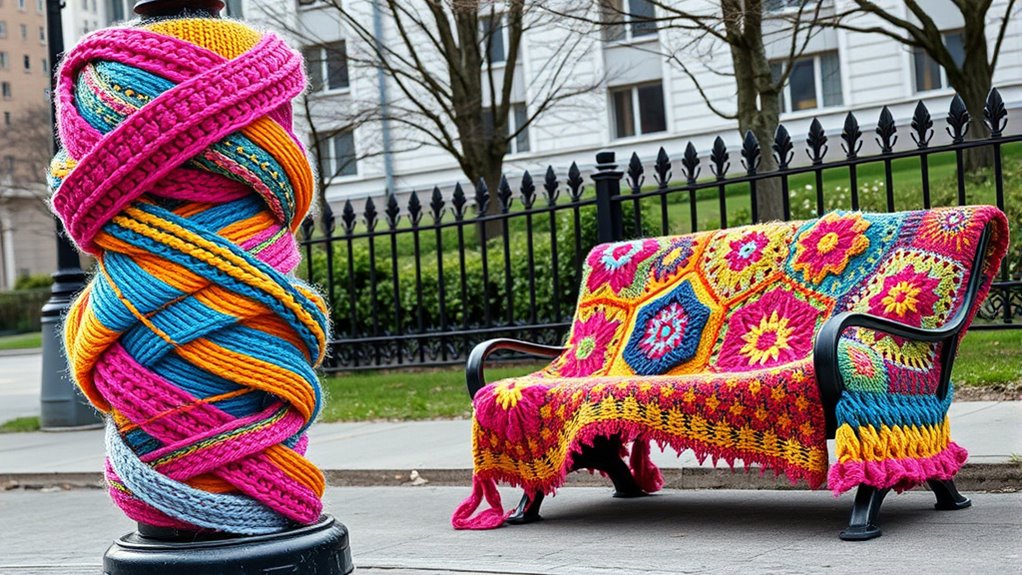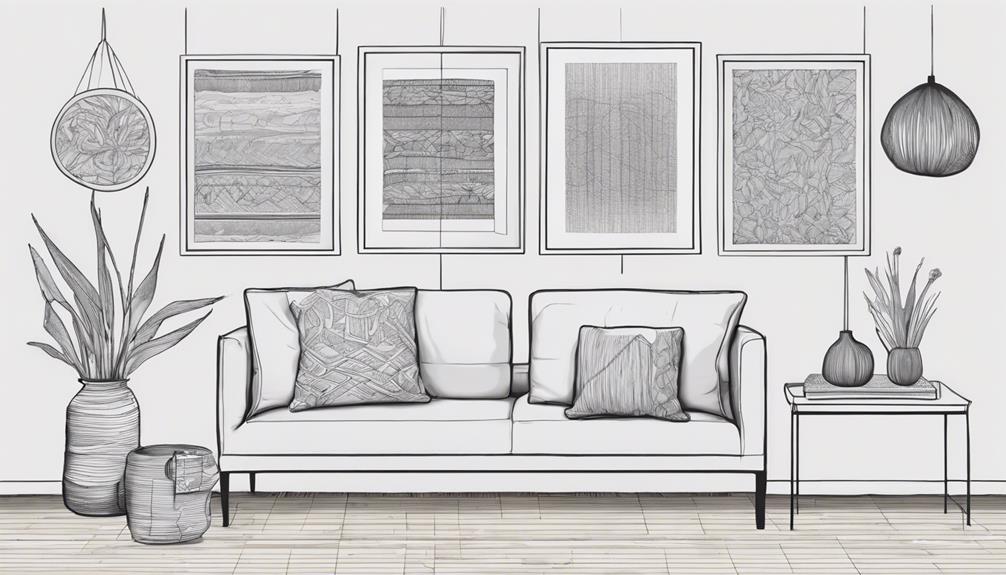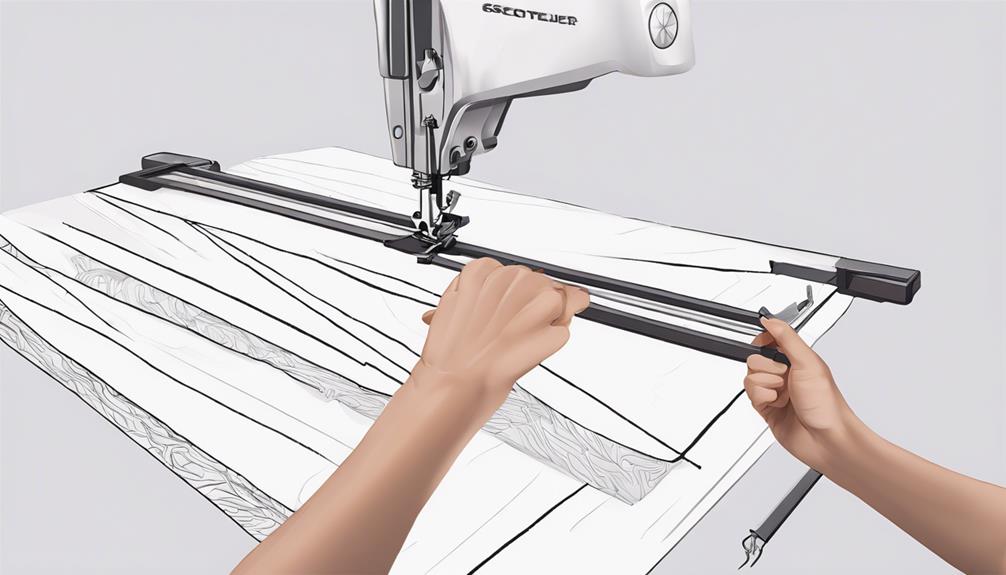Yarn bombing is a playful form of street art where you see knitted or crocheted textiles transforming urban spaces into colorful, tactile canvases. It often appears overnight, without formal permission, challenging ideas of public space ownership. This activity promotes community involvement, creativity, and activism while softening the environment’s hard surfaces. If you want to explore how this vibrant movement sparks curiosity and connects people through fabric art, keep going to uncover more details.
Key Takeaways
- Yarn bombing is a form of urban street art using knitted or crocheted textiles to transform public spaces.
- It often appears spontaneously, creating temporary installations that invite public interaction and curiosity.
- This art form challenges traditional ideas of ownership and promotes community engagement through playful, colorful displays.
- Minimal tools and skills make yarn bombing accessible, encouraging grassroots participation and collective creativity.
- It conveys messages of positivity, sustainability, and social connection by turning everyday objects into artistic statements.

Have you ever wondered how a splash of color can transform an ordinary urban space? When you see vibrant knitted or crocheted pieces wrapped around lampposts, benches, or trees, it’s not just about beautifying a city—it’s about making a statement. Yarn bombing, also known as urban knitting or guerrilla knitting, is a form of public art that turns everyday environments into lively, tactile canvases. Unlike traditional murals, yarn bombing relies on soft, colorful textiles to create temporary or semi-permanent installations that invite interaction and spark curiosity. It’s a playful yet powerful form of street activism, challenging notions of public space and encouraging community engagement through creative expression.
This form of street art doesn’t seek permission; it’s often clandestine, appearing overnight and disappearing just as mysteriously. By doing so, yarn bombers confront the idea that public spaces belong solely to authorities or commercial interests. Instead, they reclaim these areas, transforming them into open venues for artistic dialogue. Your involvement in yarn bombing can be a form of street activism—using crafted textiles to draw attention to social issues or simply to inject warmth and humor into urban life. When you wrap a city object in bright colors or intricate patterns, you’re not just decorating; you’re making a statement about community, sustainability, and the importance of human connection.
What makes yarn bombing particularly compelling is its accessibility. You don’t need an art degree or expensive equipment—just yarn, needles, and a bit of creativity. It’s a craft that anyone can learn and participate in, making it a democratic form of public art. As you engage in this activity, you’re part of a larger movement that values grassroots expression and collective effort. Yarn bombing often features playful themes, whimsical characters, or bold messages that challenge societal norms, encouraging passersby to look closer and think deeper. Its transient nature means it’s always evolving, reflecting the fleeting moments of urban life and the ongoing conversation between artists and communities.
In essence, yarn bombing transforms the mundane into the extraordinary. It invites you to see city spaces differently—not just as concrete or asphalt but as canvases for human creativity. By participating in or simply appreciating yarn bombing, you’re supporting a form of street activism that emphasizes positivity, community involvement, and the power of art to make everyday life more colorful and meaningful. It’s a reminder that even soft, knitted textiles can carry a loud message and inspire change.
Frequently Asked Questions
How Do Artists Choose Their Yarn Bombing Locations?
You choose your yarn bombing locations based on thoughtful location selection that enhances your artistic expression. You look for spots with high visibility, like urban walls or public parks, where your work can make a bold statement. You also consider the community’s vibe, ensuring your art adds to the environment positively. Ultimately, your goal is to transform everyday spaces into vibrant, unexpected art pieces that engage and inspire passersby.
What Safety Precautions Are Taken During Yarn Bombing Installations?
Think of yarn bombing like preparing for a daring adventure. You wear protective gear to shield yourself and assess the site carefully, like scouting a new trail. You check for stability, avoid dangerous spots, and make certain your installation won’t harm passersby or the environment. These safety precautions keep you secure and responsible, making your creative expression both fun and safe for everyone involved.
How Long Does Yarn Bombing Typically Last Before It Wears Out?
Yarn bombing usually lasts from a few weeks to several months, depending on durability factors like fabric type, weather exposure, and location. To extend its lifespan, you should regularly check for wear and tear and perform maintenance tips such as resecuring loose stitches or replacing damaged sections. Protecting pieces from harsh weather and avoiding high-traffic areas can also help guarantee your yarn installation stays vibrant longer.
Are There Legal Issues Associated With Yarn Bombing Street Art?
Yes, there are legal considerations with yarn bombing street art. You should always get property owner permissions before you start, as unauthorized installations can lead to vandalism charges or disputes. Understanding local laws and regulations helps you avoid legal issues. Being respectful and transparent ensures your creative work is appreciated rather than contested, allowing you to share your art confidently and responsibly in public spaces.
How Can Communities Encourage More Yarn Bombing Projects?
You can ignite community engagement by hosting workshops, festivals, or art events that celebrate yarn bombing. Share success stories to inspire participation and foster pride. To access funding opportunities, approach local businesses, arts organizations, or grant programs that support public art. Think of it as planting seeds—your enthusiasm and strategic outreach will help grow vibrant, collaborative yarn bombing projects that transform neighborhoods into colorful canvases of collective creativity.
Conclusion
Yarn bombing transforms ordinary spaces into vibrant, inviting art, making communities feel more connected. Did you know that over 70% of cities hosting yarn bombing events report increased local engagement? By adding colorful textiles to everyday surroundings, you help foster creativity and community spirit. So, next time you see a knitted sculpture, remember you’re part of a movement that turns public spaces into welcoming, artistic expressions—one stitch at a time.










